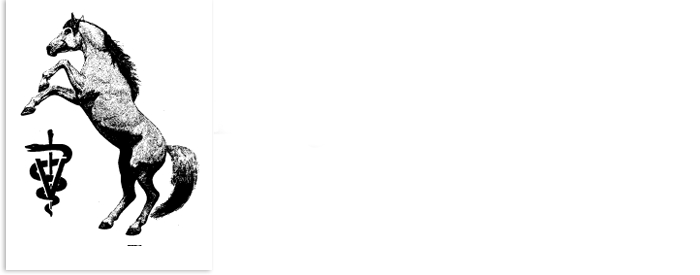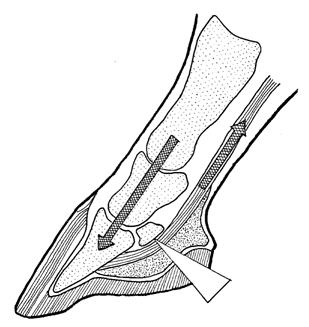A New Treatment for Navicular Disease Approved as an Alternative to Tildren
For a little over a decade Tildren has been used to treat Navicular Disease along with a number of other conditions such as back pain associated with "kissing spines" of the vertebrae, and bone spavin.
Navicular Disease is inflammation of the Navicular Bone
While Tildren can be very useful it has some drawbacks. It must be imported from France under a special limited approval by the FDA. Tildren is primarily given with 10 doses all at once put into IV fluids and given as a slow drip. Treatment cost is over $1100.
This summer another drug similar to Tildren became available. The drug is called Osphos.
In a study of 114 horses that had Navicular Disease 86 were given Osphos and 28 were given a placebo. At the 8-week follow-up visit 74% of the horses had responded by improving at least one lameness grade vs. 3% of the placebo group showing a response. At the six-month follow-up visit, over 65% of the treated group continued to show improvement in their lameness.
No other treatment was given.
In practice a combination of treatments such as corrective shoeing, coffin joint injections, Isoxsuprine, and other treatments along with treatments such as Tildren, and now Osphos, are used to maximize a horse's chance to return to complete functionality.
Versus Tildren, Osphos has a few advantages. It can be given as an injection into the muscle. This is much simpler and faster than Tildren which requires placing an IV catheter, diluting Tildren into IV fluids, and waiting as it drips into your horse. Treatment cost for Osphos is about $400, so it is much less costly than Tildren at the moment. Osphos has full FDA approval so it does not need to be imported. This makes treatment available quickly.
Some of these advantages may change quickly. Tildren has recently received FDA approval and will be available in the USA in the coming months. How it will be priced is currently unknown, so the overall cost of treatment with Tildren could come down. Still, when the full dose is given all at once it requires some time and slow IV administration.
How do Osphos and Tildren work?
Both Osphos and Tildren are drugs that work by increasing bone density. It turns out that bone is constantly being broken down bit by tiny bit by cells called osteoclasts and then rebuilt by cells called osteoblasts. So, the bone you and your horse have today is not the same bone you and your horse will have a year from today. Osphos and Tildren help strengthen bone and increase bone density by blocking the work of osteoclasts and tilting the balance towards osteoblasts which lay down new bone. This shift towards new bone formation is why similar drugs are used in human conditions like osteoporosis.
In Navicular Disease a common finding is areas of bone loss in the Navicular Bone. The rationale for using these drugs is that through their action the Navicular Bone will fill in deficient areas and the Navicular Bone will become stronger. Certainly, both drugs have proven effective in treating Navicular Disease cases.
What is Navicular Disease?
Navicular Disease is a lameness-associated pain from the navicular bone. The Navicular Bone is a small bone in the hoof just behind the coffin bone (the bone in the hoof) and the lower pastern bone. It is diagnosed by clinical signs, diagnostic nerve blocks, and X-rays. Sometimes advanced diagnostics like MRI or gamma camera scans can help as well.


